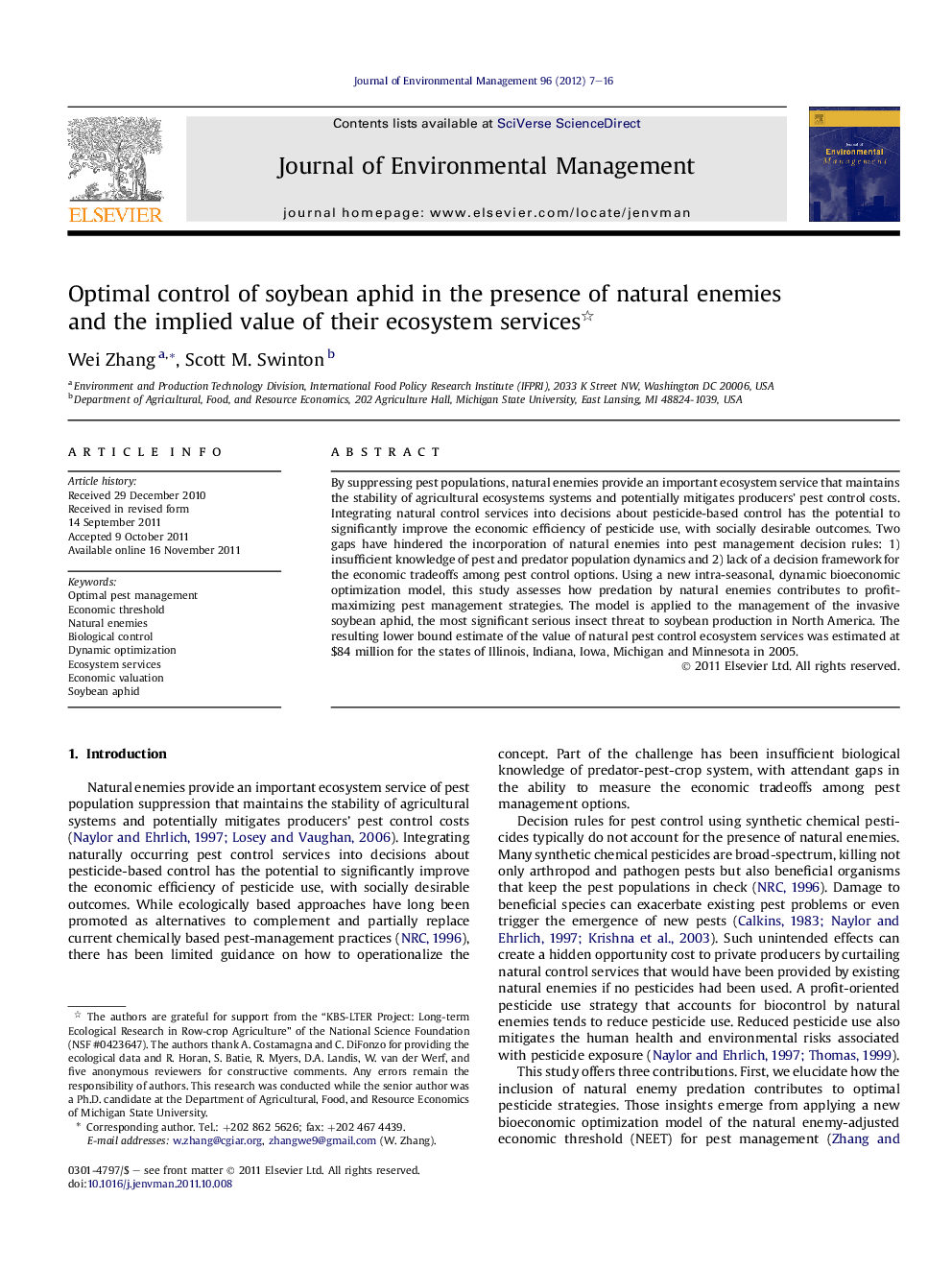| Article ID | Journal | Published Year | Pages | File Type |
|---|---|---|---|---|
| 1056883 | Journal of Environmental Management | 2012 | 10 Pages |
By suppressing pest populations, natural enemies provide an important ecosystem service that maintains the stability of agricultural ecosystems systems and potentially mitigates producers’ pest control costs. Integrating natural control services into decisions about pesticide-based control has the potential to significantly improve the economic efficiency of pesticide use, with socially desirable outcomes. Two gaps have hindered the incorporation of natural enemies into pest management decision rules: 1) insufficient knowledge of pest and predator population dynamics and 2) lack of a decision framework for the economic tradeoffs among pest control options. Using a new intra-seasonal, dynamic bioeconomic optimization model, this study assesses how predation by natural enemies contributes to profit-maximizing pest management strategies. The model is applied to the management of the invasive soybean aphid, the most significant serious insect threat to soybean production in North America. The resulting lower bound estimate of the value of natural pest control ecosystem services was estimated at $84 million for the states of Illinois, Indiana, Iowa, Michigan and Minnesota in 2005.
► Natural enemies sharply raise the pest density threshold for optimal pesticide use. ► Natural enemies boost producer net return the most for moderately infested fields. ► Value of natural enemies ranges from $4.20 to $32.60/ha/year for soybean aphids. ► Value of natural enemies was estimated at $84 million for five states in 2005.
